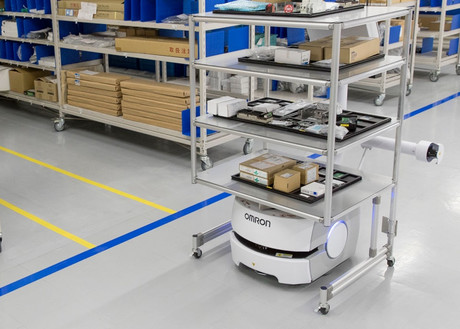Manufacturing in Australia is not dead — it's transforming

Harry Mulder, the Marketing Manager for Omron Electronics, said Australian manufacturing has been going through a significant restructure in recent years. More manufacturers are now embracing automation and new technologies to increase productivity and improve profitability.
At a special presentation at Macquarie University in Sydney last week, Mulder said manufacturing in Australia still employs nearly one million people — about 7% of the total workforce.
“It’s certainly not dead,” he assured students from the Faculty of Business and Economics. “In fact, some sectors, such as food and beverage, are thriving. The bottom line is there are many opportunities out there, particularly as markets become more global.”
But manufacturers now are facing a number of challenges, he said.
“It’s no secret that Australia, like Europe and North America, has high labour costs. And with a population of less than 25 million it is a relatively small domestic market. Also, manufacturers often face substantial barriers imposed by would-be trading partners including import tariffs and duties and restrictive embargoes and other restrictive practices.
“They are also faced with high shipping and transportation costs due to the long distance from major markets.”
But it’s not all doom and gloom, said Mulder. Australian manufacturers can remain competitive on the global stage by producing better quality products — and making them at a lower cost.
“We can achieve this through innovation and improving production lines. Innovation is the key — and Australian manufacturers are punching above their weight in that regard.”
Mulder gave students a broad overview of the Omron Group, which employs some 36,000 people worldwide and turns over more than US$7 billion annually. Omron has a proud history spanning 84 years. With its headquarters in Kyoto, Japan, the company specialises in the manufacture of automation components, equipment and systems as well as medical equipment and social systems solutions.
Since its inception Omron has achieved several significant world firsts including developing the first contactless proximity switch to detect metallic or non-metallic objects, the ATM cash dispenser, electronic ticketing gate and traffic response electronic signalling. Omron uses its own technology in its factories, resulting in a 15% increase in production.
Over the last 250 years, there have been four main distinct stages of manufacturing, each providing a quantum leap of improvement in methods.
The ‘Industrial Revolutions’ include:
- steam and mechanisation;
- electrification and the production line;
- computerisation;
- digitisation, robotics and AI.
“With the Fourth Industrial Revolution we’ve seen an explosion of connectivity and networking,” said Mulder. “This includes connection to the internet and the advent of cyberphysical systems. Physical locations have become less important.”
New technology including handheld computing, smartphones and tablets have been a game changer. So how does connecting to the internet help manufacturing? “Mainly through the storage and analysis of big data,” he said.
“This data is logged (huge files stored in the cloud) and it is analysed by computers, running 24/7, which look for anomalies. By monitoring and analysing equipment, manufacturers can find inefficiencies and improve quality.
“AI (artificial intelligence) means computers learning for themselves — and there has been much development in this area.”
The Internet of Things (IoT) and the Industrial Internet of Things (IIoT) refers to devices that collect and transmit data to the internet. According to Forbes, in 2008, there were more devices connected to the internet than there were people — and this number is rapidly rising. And according to some estimates, the IoT will add $10–15 trillion to global GDP in the next 20 years.
“Big data will determine how efficiently a machine operates so that anomalies can be detected which could lead to breakdowns or other problems. Preventative maintenance can then be carried out.
“It is now also used for traceability where a product can be traced throughout its supply chain, to verify its origins and authenticity. This helps to prevent counterfeiting, particularly in the pharmaceutical industry.”
Mulder admits robotics and automation will cost jobs — but these are mainly dangerous, dirty or tedious jobs which humans don’t particularly like to do.
“It will mean a reskilling — humans can use their brains to take on more meaningful jobs, requiring higher level, abstract thinking. The main aim is for machines to work with humans, not to make humans redundant,” he told students.
Mulder said there are many opportunities still available for Australian manufacturers, but some changes in the way they think may be needed.
“Quite simply, manufacturers need to adapt and innovate in order to succeed — but we can expect some exciting times ahead.”
Climate-friendly electricity from ammonia
Researchers the Fraunhofer Institute have developed a high-temperature fuel cell stack that can...
Digitalised, sustainable battery cell production
German researchers have developed a flexible winding system for battery cells that is embedded in...
Expired deadline threatens critical infrastructure as compliance lags
The deadline for achieving cybersecurity framework alignment for the SOCI Act expired on 17...












